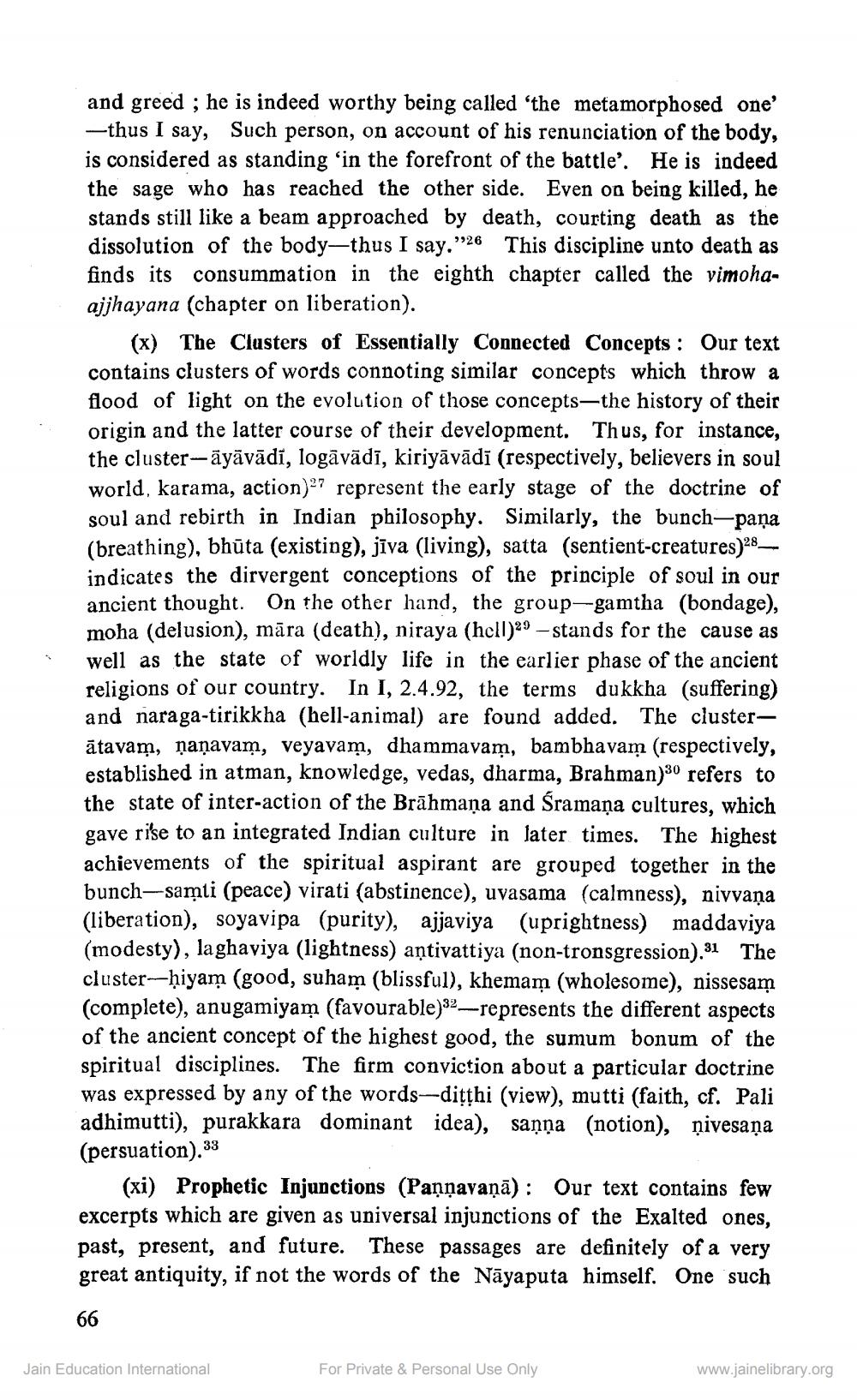________________
and greed; he is indeed worthy being called 'the metamorphosed one' -thus I say, Such person, on account of his renunciation of the body, is considered as standing 'in the forefront of the battle'. He is indeed the sage who has reached the other side. Even on being killed, he stands still like a beam approached by death, courting death as the dissolution of the body-thus I say."26 This discipline unto death as finds its consummation in the eighth chapter called the vimohaajjhayana (chapter on liberation).
(x) The Clusters of Essentially Connected Concepts: Our text contains clusters of words connoting similar concepts which throw a flood of light on the evolution of those concepts-the history of their origin and the latter course of their development. Thus, for instance, the cluster-āyāvādī, logāvādī, kiriyāvādī (respectively, believers in soul world, karama, action)27 represent the early stage of the doctrine of soul and rebirth in Indian philosophy. Similarly, the bunch-pana (breathing), bhūta (existing), jīva (living), satta (sentient-creatures)28— indicates the dirvergent conceptions of the principle of soul in our ancient thought. On the other hand, the group-gamtha (bondage), moha (delusion), māra (death), niraya (hell)29 - stands for the cause as well as the state of worldly life in the earlier phase of the ancient religions of our country. In I, 2.4.92, the terms dukkha (suffering) and naraga-tirikkha (hell-animal) are found added. The clusterātavam, ṇaṇavam, veyavam, dhammavam, bambhavam (respectively, established in atman, knowledge, vedas, dharma, Brahman)30 refers to the state of inter-action of the Brāhmaṇa and Śramaņa cultures, which gave rise to an integrated Indian culture in later times. The highest achievements of the spiritual aspirant are grouped together in the bunch-samti (peace) virati (abstinence), uvasama (calmness), nivvaṇa (liberation), soyavipa (purity), ajjaviya (uprightness) maddaviya (modesty), laghaviya (lightness) antivattiya (non-tronsgression).31 The cluster-hiyam (good, suham (blissful), khemam (wholesome), nissesam (complete), anugamiyam (favourable)32-represents the different aspects of the ancient concept of the highest good, the sumum bonum of the spiritual disciplines. The firm conviction about a particular doctrine was expressed by any of the words-diṭṭhi (view), mutti (faith, cf. Pali adhimutti), purakkara dominant idea), sanna (notion), nivesana (persuation). 33
(xi) Prophetic Injunctions (Panṇavaṇā): Our text contains few excerpts which are given as universal injunctions of the Exalted ones, past, present, and future. These passages are definitely of a very great antiquity, if not the words of the Nayaputa himself. One such
66
Jain Education International
For Private & Personal Use Only
www.jainelibrary.org




